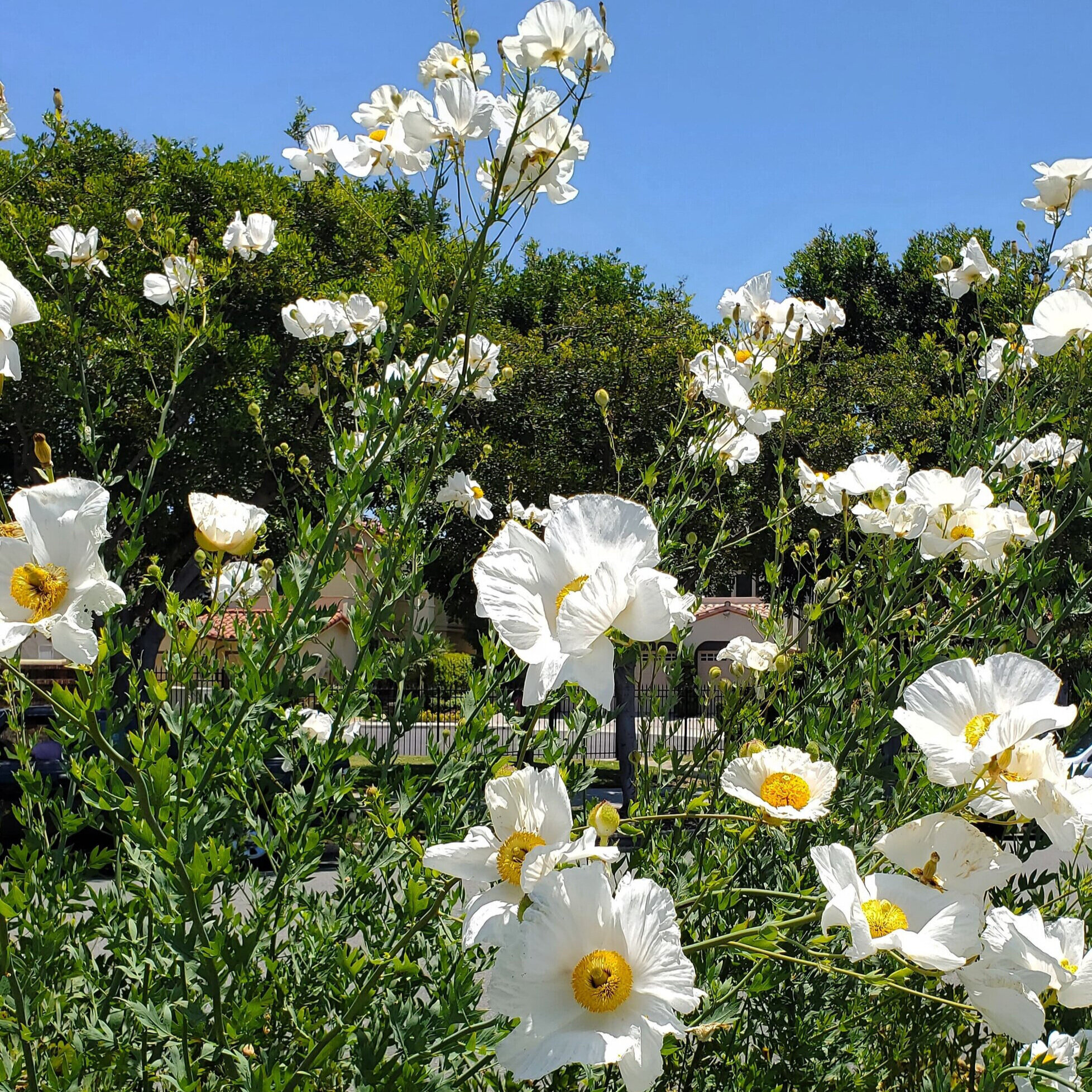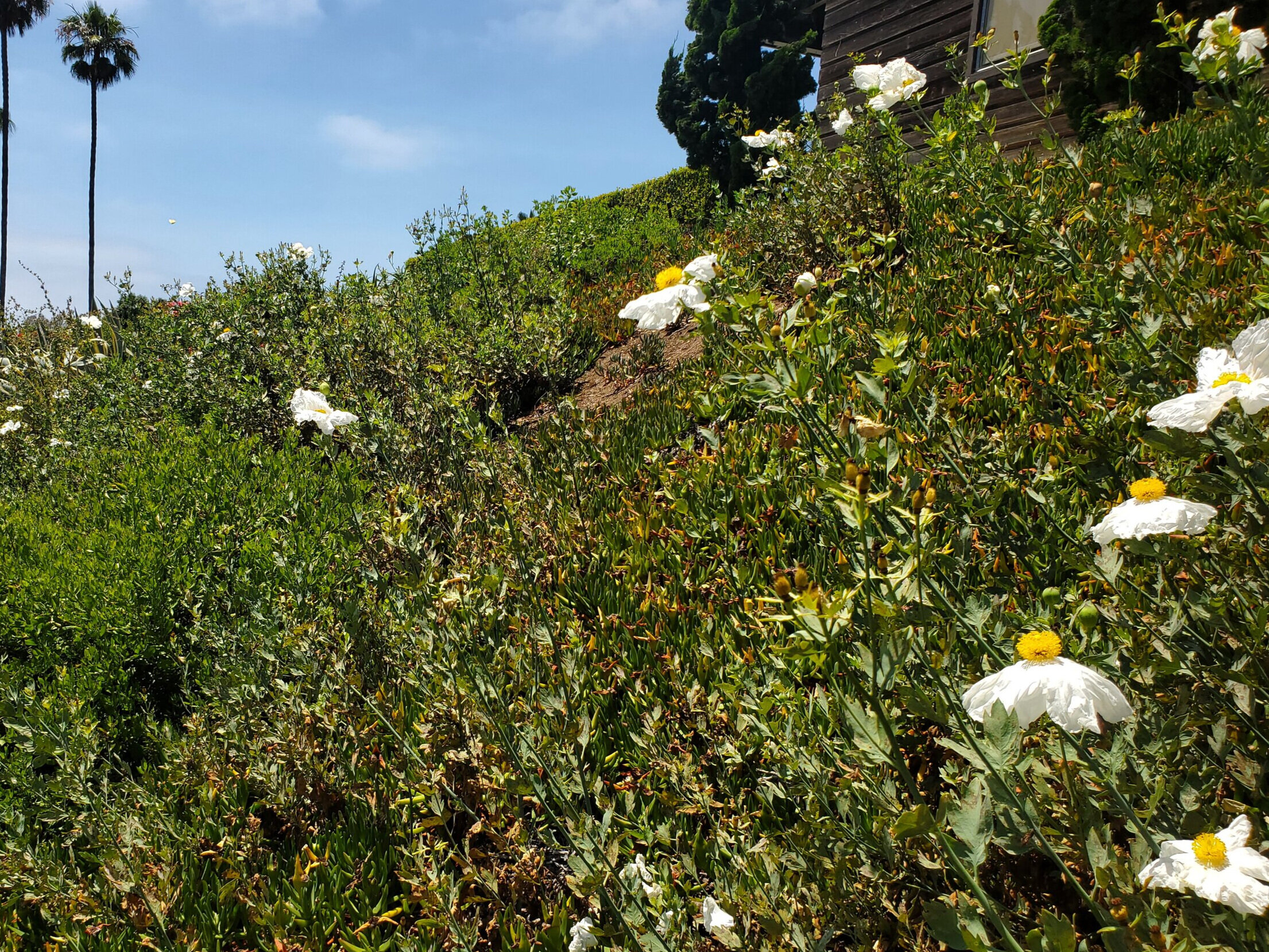Plant spotlight- Romneya coulteri
Welcome! I’m very excited to share Botanica curiosa with everyone that is interested in plants, whether it be gardening, planting design, native plants, etc. The goal of this blog is to share my experience in residential and commercial planting design as well as to explore plants from different angles.
Let’s kick this off with a spotlight on one of my personal favorite California native plants……
Romneya coulteri / Matilija Poppy
This beautiful California native perennial is known for its large white crepe paper like petals and large cluster of yellow stamens, that some say looks like a fried egg. I always look forward to seeing the tall, whimsical Matilija poppies blooming in late Spring. It is a fantastic low maintenance, low water use perennial, but it only thrives in certain growing conditions.
Part of the Poppy family, Romneya coulteri is native to Southern California and Baja California. It grows naturally in chaparral/ dry canyons and coastal sage scrub environments throughout Southern California. It was named after an Irish Botanist named Thomas Coulter, who was working in California in the mid 1800’s.
For those interested in adding this to their landscape or garden, Tree of Life nursery in San Juan Capistrano, CA has a fantastic variety named ‘White Cloud’, which is more suitable for gardens, with a compact form and large flower.
Growth characteristics:
Perennial, deciduous shrub with an upright form, can be slight weeping due to height
Rapidly spreads through rhizomes (underground horizontal stem system, which continues to “spread” under the right conditions)
Growing conditions:
Full sun
Only water when plant is establishing, after roots are established reduce watering to once a week, then limit watering
Prefers coarse/ sandy well -drained soil with PH of 5-8
UDSA zones 6-10 / Sunset zones 14-24
Size:
Grows 4’-0” – 8’-0” tall and easily twice as wide
Flowers:
7” round flowers, largest of any California native
Each flower has 6 large white petals with a crinkled texture and a large cluster of yellow stamens
Flowers from April - July
Leaves/ Stem:
Grey/ green leaves and stem
Double lobed leaves alternating along stem
Glabrous – leaves and stem are smooth, no hairs or spikes
Care:
Very low maintenance
To prune, cut back to 3”-4” high in late fall/ early winter
The best time to propagate, if desired, is during spring, any other time will disturb plant growth
Does not like to be transplanted/ moved once established
Does not require fertilizer
Landscape placement:
Due to size and vigorous spread, this should be planted in a parkway, slope or large area
Not recommended in a space smaller than 10’-0” x 10’-0”
If planting in a smaller area that needs containment, use a root barrier 8’-0” out from base of plants
Think slopes should just be planted with Acacia? or iceplant? Think again!
This west facing slope in Laguna Beach, planted with Romneya coulteri, is a spectacle during the summer months.
Companion planting:
As the flowers grow many feet tall, it’s a good idea to layer another plant in the foreground or around the Romneya (provided there is ample space).
Evergreen, low growing shrubs such as, Baccharis ‘Pigeon Point’ / Coyote Bush or a low growing Ceanothus/ California Lilac such as ‘Centennial’ create the looks of a green carpet around Romneya but are very low water use.
For a color contrast, consider Salvia leucophylla/ Purple Sage of Salvia Leucantha/ Mexican Sage. Salvia leucophylla is a deciduous native perennial with purple flowers that bloom April – July. Salvia leucantha varieties are more compact, with a darker purple flower that blooms almost year-round.
Salvia leucantha planted around a large cluster of Romneya coulteri, creates a dynamic contrast of color and textures.
Sources:
Tree of Life Nursery / californianativeplants.com
Las Pilitas Nursery / laspilitas.com
Santa Monica Mountains Conservancy / ssmc.ca.gov



